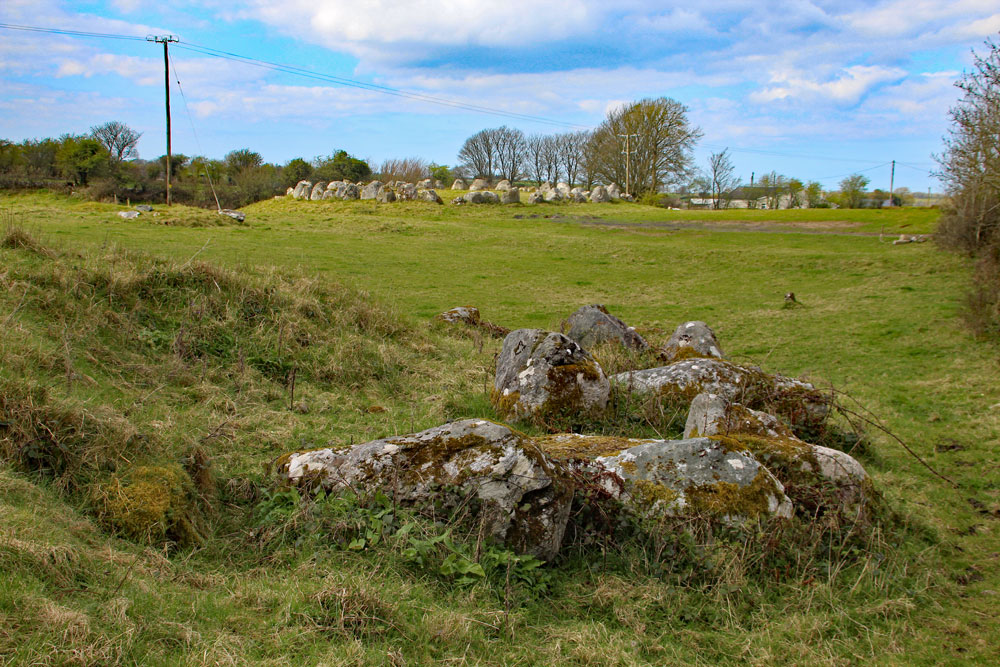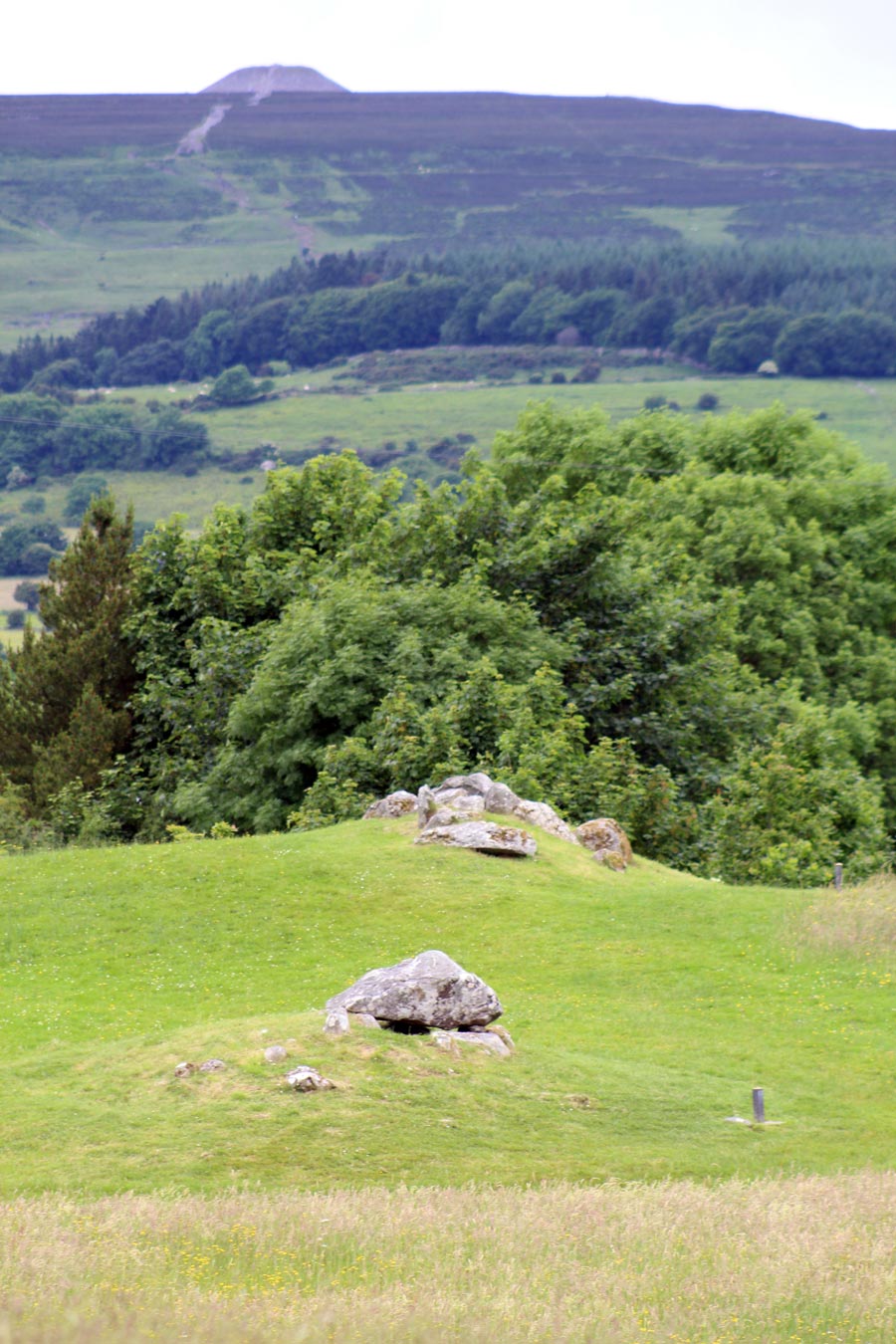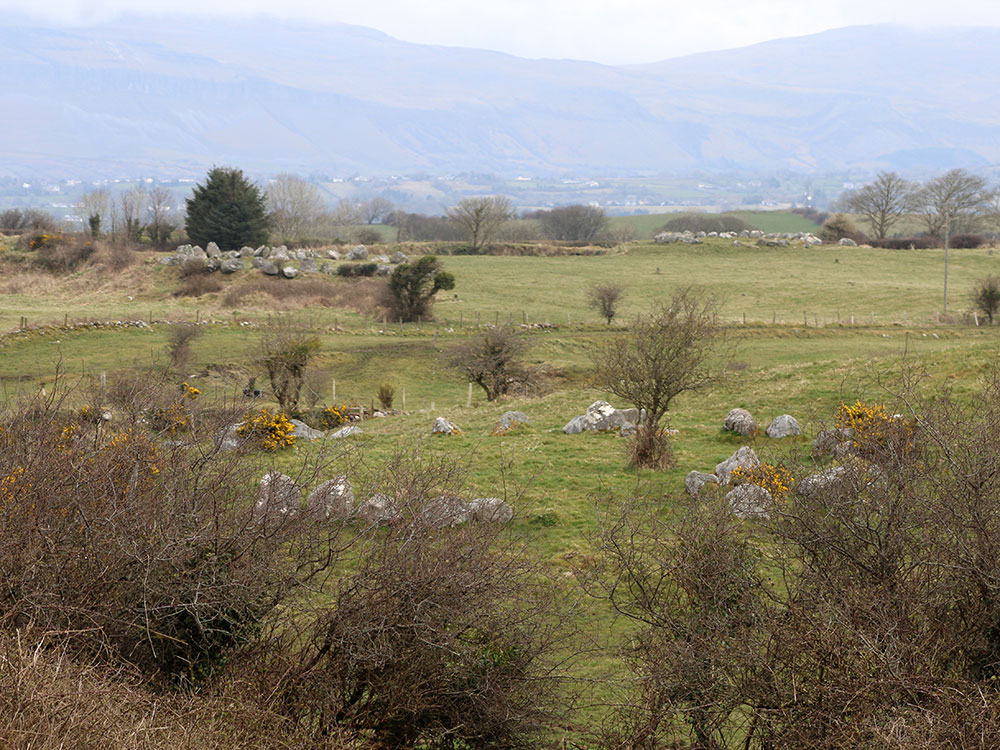Destroyed circles
Between Circles 19 and 26 are the remains of several destroyed sites now mainly known about through Petrie's notes taken in 1837. Circle 20 is a low mound with five large boulders remaining. A few paces to the south is Site 21, a massive boulder that may have belonged to a circle. It is possible that it was the capstone of a dolmen, though at Carrowmore such stones are usually split in half.
Circle 22 is probably fairly complete, but it is hard to judge, as it lies partially buiried under quarry spoil. It looks to have had a large diameter. This monument would be well worth excavating and restoring. Circles 23, 24 and 25 seem to have been completely destroyed by the large quarry.

No. 20. Situated about 20 paces south of 19 (dolmen-circle).
This circle was of small diameter, and consisted of twelve stones, five of which had been recently removed."
- Petrie.
No. 21." (dolmen-circle).
"Still further south a few stones of this circle, with the table-stone of the cromleac, still remain."
- Petrie.

Circle 22
No. 22. Situated south (or southeast) of 21; six paces from it, close to the road.(dolmen-circle).
"This is a fine double circle, with a cromleac, partly ruined, in the interior. The diameter of the outer circle is fifty-three feet, and of the inner one thirty-two feet.
The stones in both are, as is most usual, placed quite close to each other. The number of stones in the outer circle is forty-five, but they appear to have been originally fifty-two (the same number as in 29), as places for seven are empty."
"Within the cromleac an interment was found by Mr. Walker."
- Petrie.

No. 23. Situated about fifteen paces to the south of 22 (dolmen-circle).
"This circle is considerably injured, seventeen stones only remaining of it, although it originally consisted of thirty or thirty-two. The diameter is thirty-six feet. The stones of the cromleac remain, but are displaced, and human bones have been found within it."
- Petrie.
Circle 24
No. 24. West of 23 (dolmen-circle).
"There are twenty-three large stones, which evidently belonged to another circle now destroyed."
- Petrie.
"They have been rolled to the bottom of the hill in clearing the land, and placed in a row."
- Wood Martin.

Site 25
No. 25. Situated 6 paces west of twenty-three (dolmen-circle).
"Of this circle only nine stones remain, and no cromleac. The diameter was forty-five feet."
- Petrie.
"The site is now entirely cleared."
- Wood Martin.


